Getting Started with Guest Blogging
Guest blogging is one of the best ways to expose you and your business to the right people. Everybody who has ever written long-form content refers to guest blogging as a way to build backlinks to your website. But it has evolved beyond that. As it’s also an excellent way to grow your brand awareness, drive traffic to your site, and position yourself as an authority. You see, when you agree with another party to write a guest post for them, you’re practically borrowing someone else’s audience to create content that’s valuable for both the blog, their audience, and your business.
But when it comes to getting started, when you say “yes! Today I’ll start guest blogging”, what do you have to do? That’s exactly what this post will cover.
Understanding Your Purpose First
It’s easy to make guest blogging the biggest waste of your time if you don’t have a well-defined purpose for it. Even with all the benefits of guest blogging, you can do it wrong if you write for the wrong publication with the wrong audience, in the wrong market.
So first thing first, determine your main reason to spend your time with guest blogging.
Here are some good reasons to do it:
- Build links to your website and send some referral traffic.
- Expose your business to your ideal audience and expand brand awareness (and increase branded searches as a consequence).
- Position yourself and your brand as experts to strengthen your authority in your industry.
- Become a thought leader and increase your influence in your niche.
- Build relationships with new people in your market and expand your network.
- Show your expertise in a specific skill, demonstrating that you know what you’re offering to your clients/customers.
When you have a clear purpose, it will be evident what kind of websites are worth for you to contribute.
Finding Guest Blogging Opportunities
Googling
Google is the easiest and most straight-forward place to find companies that accept guest posts.
You can get creative with it if you do SERP analysis often. But the most popular way is to insert a keyword related to your business with “submit a guest post” or “write for us” (keeping the quotes), so the results are guaranteed to contain those sentences.
For example:
- E-commerce email marketing “write for us”
- UX design “guest post by”
- Keto dieting “guest post guidelines”
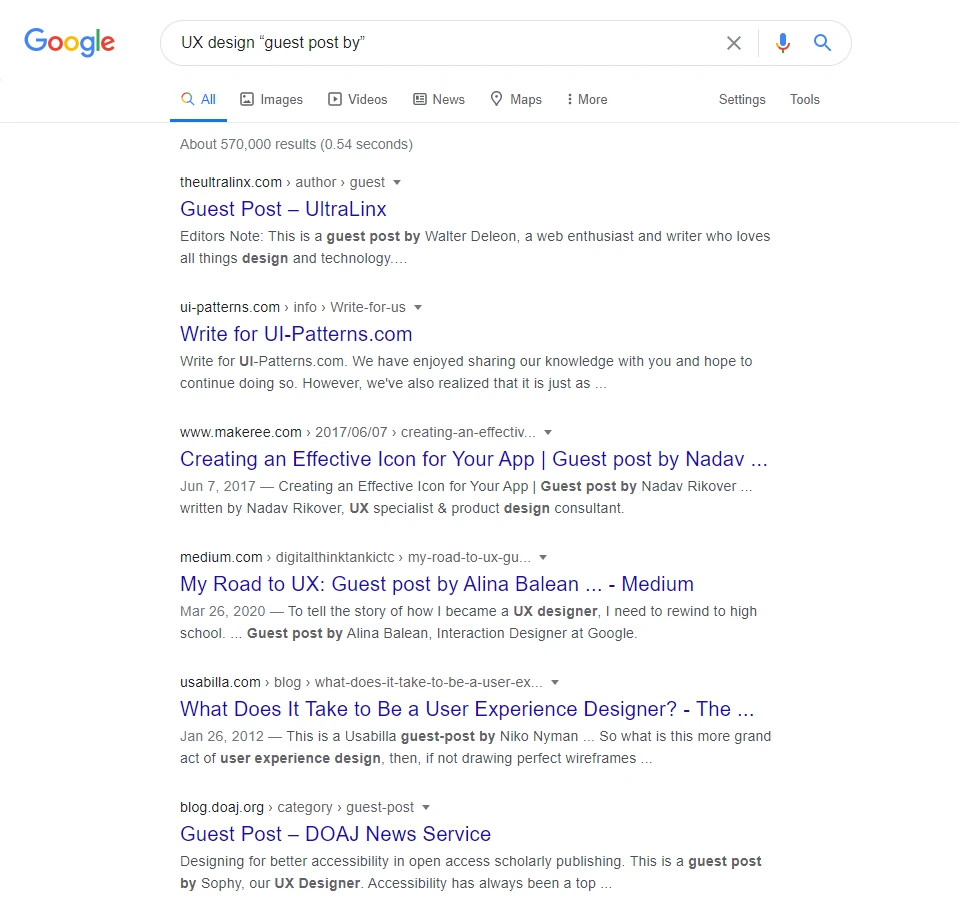
A con of this method is that everybody and their dogs use it, so you’ll probably find yourself competing with a lot of similar websites for a spot in the content calendar (you can bypass this with great pitching though). You can also use other tools like Buzzsumo to see where the people in your niche are getting published. And start from there. It all depends on how you use the tools.
The big names in your industry
Finding the big names in your industry is pretty straight-forward if you’re up-to-date with your industry and are active on social media. The problem is: the bigger the publication, the harder it is to get published. However, it’s not impossible if you’re prepared to get a lot of rejection, and if you’re willing to do some upfront work. Just as Aaron Orendorff — the master of guest blogging — does. Aaron writes completed articles specially made for each publication. And if it gets rejected, he’d tweak the article to fit another website, and pitch again and again multiple times. He says in one of his posts:
“I’d sent the exact same email not only to seven different addresses at Entrepreneur… but a week prior I’d also sent it to multiple addresses at Huffington Post, Mashable, Forbes. Inc…
Each of those pubs either rejected it or didn’t respond to the same article. Seventeen nos. But, it only takes one yes.”
He’s living proof that getting published in major publications is very possible. As long as you’re willing to do what it takes.
Do networking and join a community
The easiest way to get accepted as a contributor is to know the editor/content lead of the website. Networking helps a lot with this and other multiple benefits. And when it comes to guest blogging, it can be a pretty good way to:
- Know successful guest bloggers and see where they’re being published.
- Build relationships with other bloggers in your niche (that might accept guests).
- Hear about websites that openly accept guest contributors and are a good fit for you.
- Have a wider reach in your market when promoting your guest content, if people have seen you before, they’re more likely to share and engage with it.
Start by joining communities on Facebook, LinkedIn, Reddit, or other platforms where your market hangs around, and find your tribe. You can also expand your network with other activities like conferences, PR outreach, or simply referrals. The bigger your tribe, the bigger the chances of finding a good deal. Alternatively, you can try platforms that are focused on guest blogging.
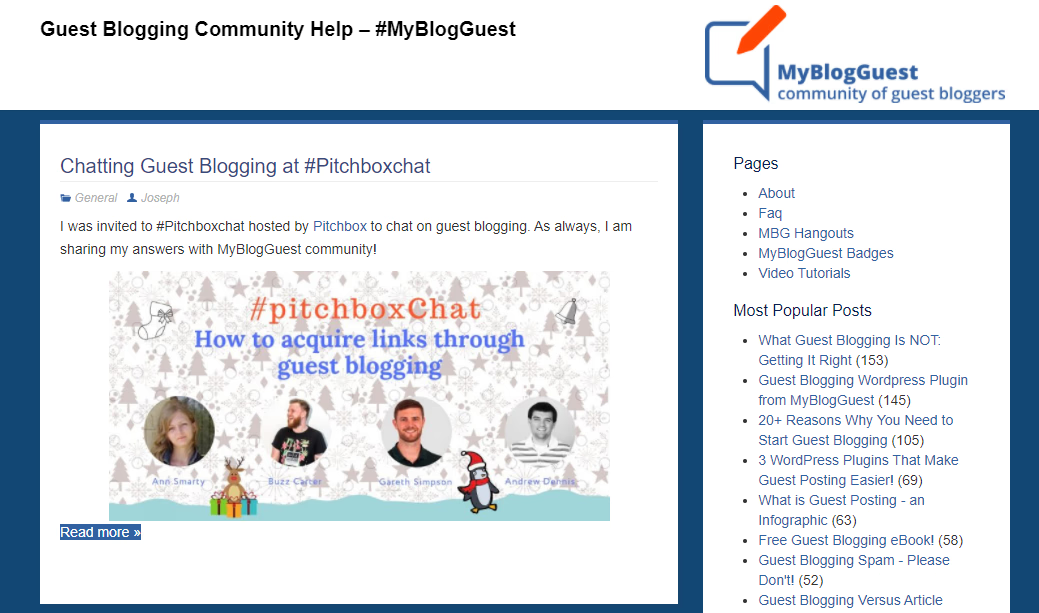
Platforms like My Blog Guest allow you to find blogs that are actively looking for contributors to reach out to them. You can even post yourself as a writer looking to contribute to a particular niche and someone might reach out to you!
Competitor Backlinks
If you’re playing the SEO game. You can make use of your competition analysis work to gather the backlinks that your competitors receive. This, to spot blogs and publications that are already linking to them and pitch them. Chances are that your competitors are also doing some guest blogging, or perhaps they missed the opportunity and it’s the perfect time for you to do it. You’ll only know when you check. If you have access to SEO software like Ahrefs or Nightwatch, you can find these backlinks easily and filter the results so it only shows one backlink per domain, and blogs only. Moz’s Link Explorer tool is pretty useful too.
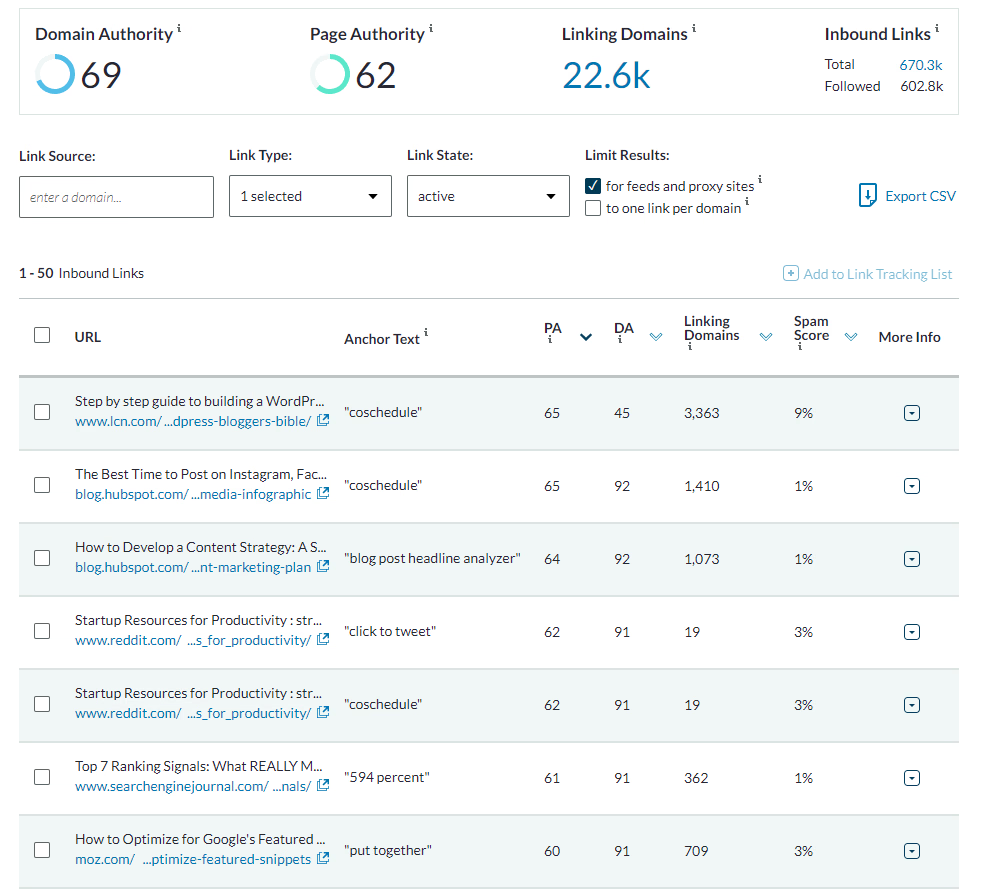
You can also do some good ol’ Googling by typing “Link: competitor.com -competitor.com ‘guest post’” to see all the guest posts linking to your competitors as well.
Refine your guest post list
You can’t just write a guest article for everybody. As said earlier, you have to spend your time writing for websites that fit with your goals. And most websites you gather won’t be a fit.
So once you’ve found a bunch of websites to pitch your articles. You need to evaluate them based on a couple of key requirements:
- Relevance. Are their topics related to what you want to write about? Make sure that your topic is highly relevant to the blog and helpful for their audience.
- Blog activity. Are they actively publishing content every week? If they don’t, chances are that they won’t bother accepting guest posts.
- Target audience. Is their audience relevant to your business? Always write for the kind of people that might be interested in what you offer.
- Readership and traffic. How much traffic drives the blog? Is their audience engaging with their content? Make sure to publish your content in places where it gets read and shared.
- Valuable keywords. Is the domain strong enough to rank for great keywords? Are these keywords relevant to your topics? Do some keyword research to know that.
When guest blogging, it’s essential to make sure that the articles you’re writing are not being wasted on a publication that’s 100% out of your industry and provides nothing to your business.
Hence the importance of choosing the right websites for you.
5 Pitching and Writing Best Practices
As soon as you’ve got a renewable source of websites and a curated list of editor’s contacts, you can start pitching them all and pray for a response. But that’s a surefire way of getting rejected. Cold email tools are still great for pitching, but only if you personalize your email enough so it stands out from the rest.
Here are 5 best practices for pitching ideas and writing rad guest posts.
1. Get to know the blog
Before sending a pitch to that dream publication, you need to do some background work. Yes, you can’t just do it all automatically, you gotta do it organically. And the first thing you need to do is to know the blog. The editors who deal with guest bloggers all day every day will notice if you understand what they’re about. You can’t fool them. Check their blog. Take a look at the kind of content they publish, read a few of them, and then ask yourself:
- How is your expertise valuable for the website’s audience?
- How is their brand voice? Is your writing style coherent with the rest of the blog?
- Does the blog require a constant influx of content? How do they benefit from your contribution?
- Are there valuable link building opportunities for you?
- Do you know about a topic they haven’t covered yet?
Once you know who you’re talking to, you can start brainstorming some ideas.
2. Research what posts do best
Knowing the blog is fundamental to come up with valuable content ideas. When it comes to brainstorming. Don’t think too much about it, just take them out of your head, and then filter. Now, to filter the right topics to propose to your target site, make sure it meets some key requirements:
- The topic hasn’t been covered on their blog yet. To make sure of this, go to the blog and use the searcher to look for that topic (if they have a searcher). If they don’t have a searcher, you can use Google and type “site:blog.com topic” to check.
- Your topic has SEO potential. Use an SEO tool like Ahrefs or Moz, and insert their site’s URL to see which organic keywords are bringing real traffic. Check if your topic fills a keyword gap in their content.
- Make sure you truly have expertise on the topic. The best way to leverage guest posts is by demonstrating your expertise to your industry, so make sure you’re talking from the voice of experience.
- The topic is interesting for the audience. Study what kind of content performs best on their blog, whether by traffic or shares. Come up with topics that follow similar formats, headlines, and ideas.
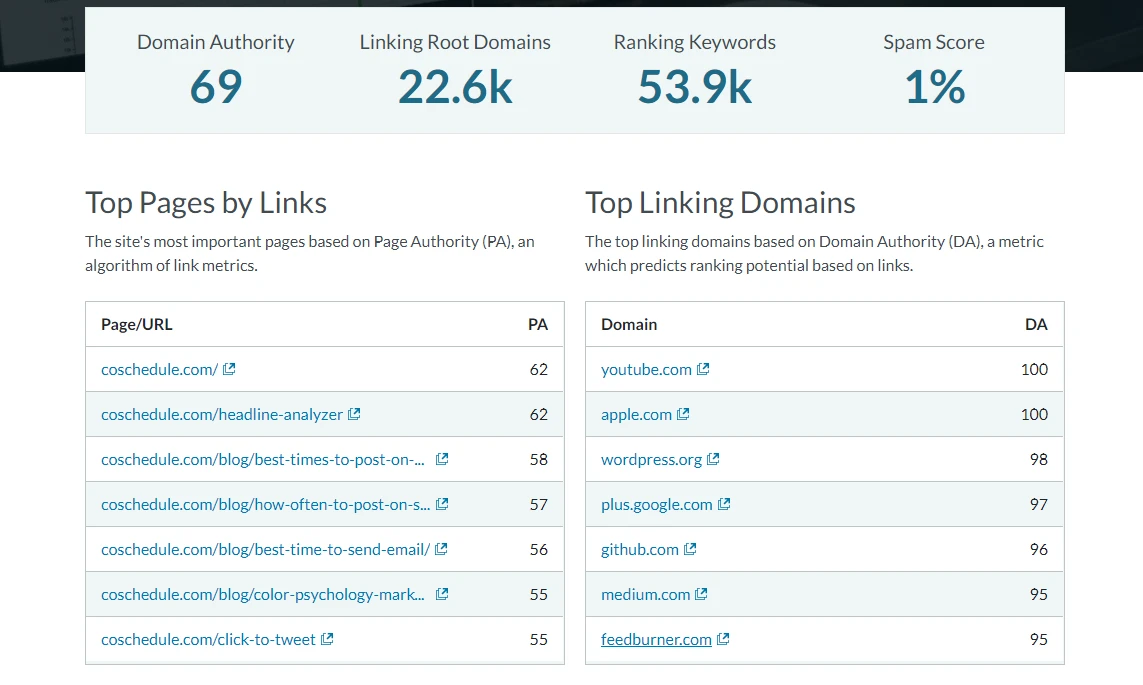
In the end, you’ll only propose like 3-5 ideas. So make sure they really have something.
3. Warm-up your pitch target
The best way to bypass competition is by doing things that don’t scale. In this case, investing time warming up your pitch target. The principle is simple: if the editor knows your name, they’re more likely to approve your idea.
Here’s where you can get started:
- Find potential bloggers in your network that might know you or your brand and ask them if they’re open to contributions.
- Engage with your contacts on social media and have conversations with them.
- DM them, have a chat, get to know them. Be yourself and be personable.
- Help without expecting anything in return. Share resources that they might find useful.
Once you know they will remember your name. You can ask them if they accept guest bloggers on their website, and start pitching your ideas.
4. Read the guidelines and write great content
When your topic gets approved, it’s time to start writing. If you know how to write great content, this will be no issue for you. However, it’s essential to read the website’s content guideline or brief and pay attention to the details.
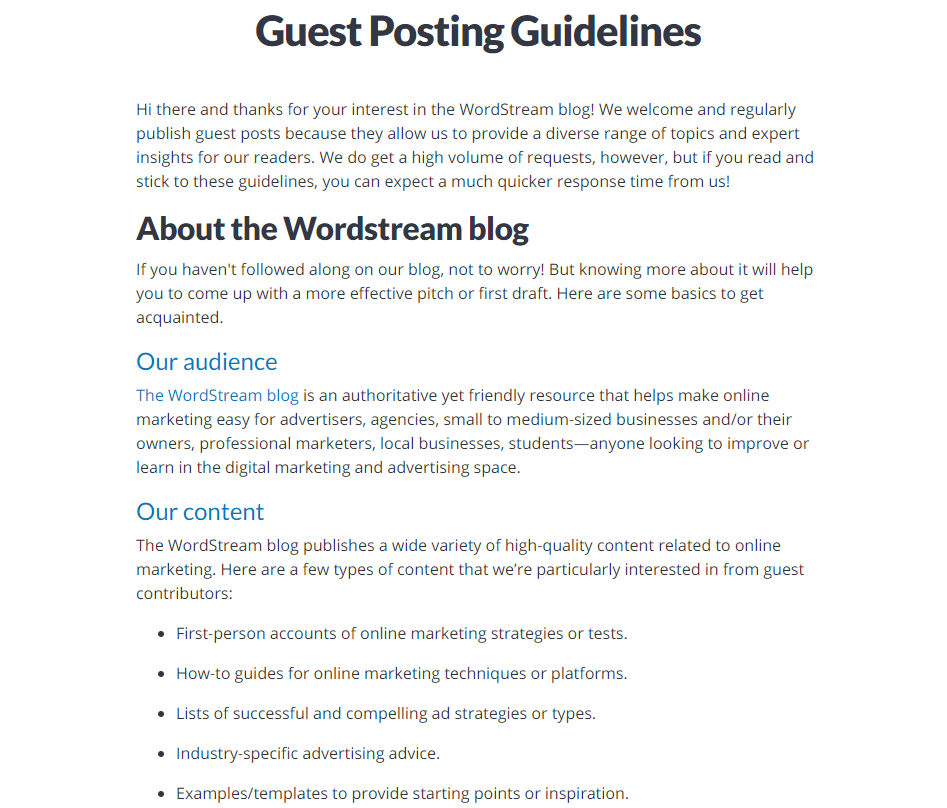
These guidelines normally include how your writing tone should be, the maximum word count, the image format, and all the editing process. If you have doubts, ask questions. The last thing you want to do is to ruin your post because you misread something. Besides being great, remember that your guest post should be:
- Similar to the rest of the blog. Keeping the same format and style according to the guidelines.
- Valuable to their audience. Write for the audience that’s going to read you, not for your editor.
- Zero promotions. You’re only allowed to link your website when it’s highly relevant to the topic and makes no interruption.
- Rich in internal links. You should also include links from that website, it should be beneficial for them too.
- Include a call to action! Ask the editor what they want their readers to do after reading their content. If it’s to engage, include a CTA asking for a comment. If it’s to sign up, tell them to learn more about their services. Get a list of CTAs and use what seems more actionable.
Also, there’s nothing wrong with outsourcing your guest posts! As long as you come up with the ideas and supervise the content, you’re still the author.
Make sure to hire the right writer for you. And if it’s too hard, use an AI writing tool like Chimp Rewriter to create a draft and make your work easier.
5. Perfectionate your author bio
The only place where you can promote yourself is in your author bio.
If there’s no author bio, it’s not a guest post. So make sure to submit an appropriate author bio that describes you and your business properly.
Author bio best practices:
- To get the backlink, include a link to your website within the desired anchor text.
- If you want to maximize traffic to your site, take a page from your site that’s highly relevant to the topic and put the link in the bio along with a great call-to-action. If you don’t have anything relevant, don’t do it.
- To get more social media reactions, include your Twitter or Instagram tag in the bio with a CTA asking to follow you to get more quality content.
- When describing yourself and your background. Make sure to position yourself as an authority, but sounding human at the same time!
Author bio example:


After your guest post is published
Publishing is not the end of the job. You need to put your article in front of the right people. If you want to get the desired traffic, the shares, and the results. This is a must.
So here’s what you should be doing the day you get published:
- Track performance. The only way to determine if your guest post was a success or not is to watch out for the referral traffic you receive from it. Getting an analytics tool will help you track such traffic and most of your marketing KPIs.
- Engage with comments. If you’re the author, you’re in the obligation of responding to all the comments made in the blog or social media. Respond to questions, give your opinion, and make it worth commenting on your posts.
- Share it on social platforms. Distribute your article on your social accounts so people that follow see it, you can also ask your close friends to you to give it a read and give you their opinion (and to share it).
- Distribute to people who might find it valuable. If you’re active in a community, share your article with the people who might find it valuable. If making it public, try to not sound too promotional, as these often ban promotional posts.
- Listen to feedback. Ask readers to give you their opinion, and listen to it. Read the comments and see what are the most commonly asked questions, see what you didn’t cover, and learn so you can do it better next time.
Build Your Guest Posting System
When you get into the game, you’ll eventually find guest blogging opportunities where you didn’t see them before. And if you keep doing it, you’ll be seeing more and more traction over time. Building a portfolio of publications logos you might want to add to your personal website. Remember that guest blogging isn’t more than borrowing an audience to provide value. So go and give value. Always.
About the Author
Mark Quadros is a SaaS content marketer that helps brands create and distribute rad content. On a similar note, Mark loves content and contributes to several authoritative blogs like HubSpot, CoSchedule, Foundr, etc. Connect with him via LinkedIn or Twitter.
